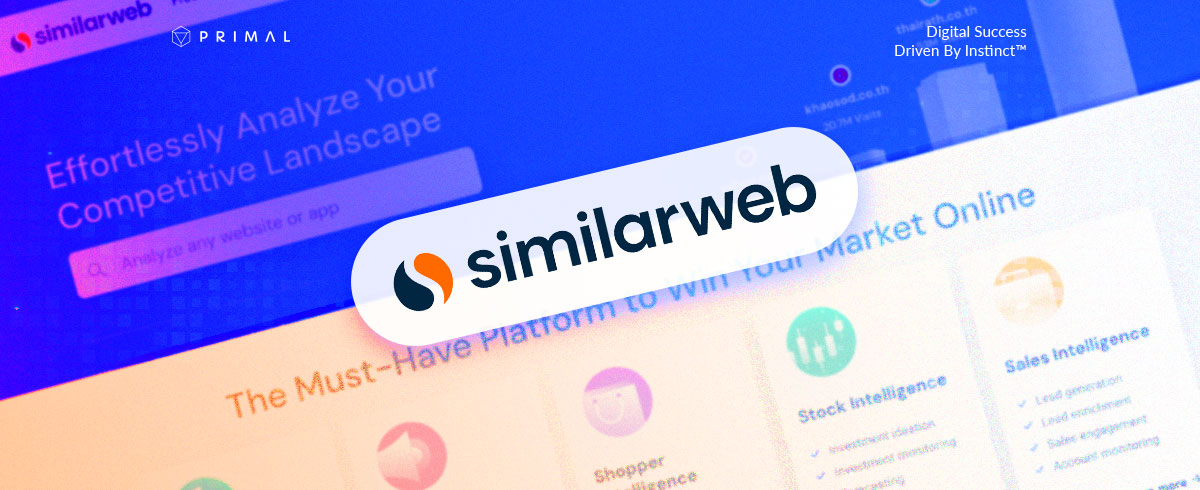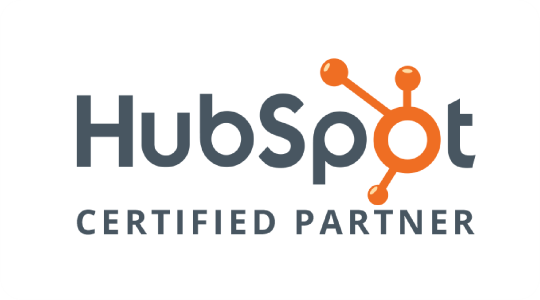Analysing Competing Websites with SimilarWeb for SEO Advantage
In today’s digital landscape, understanding your competition is not just a strategy; it’s a necessity. With numerous websites vying for the top spot on search engine results pages, gaining a competitive edge is paramount. That’s where SimilarWeb steps in, offering invaluable insights into your competitors’ strategies and performance.
In this guide, we’ll explore how SimilarWeb can be your secret weapon for SEO success. We’ll explain what SimilarWeb is and how it works. We’ll also mention the features and capabilities that make it a valuable SEO tool and highlight the benefits of using SimilarWeb for competitive analysis.
Let’s begin by talking about competitive analysis in the context of SEO.
Table of Contents
The Power of Competitive Analysis in SEO
Competitive analysis in SEO helps you identify what your competitors are doing right, areas they are neglecting, and opportunities for you to excel. Competitive analysis is an insightful exploration that uncovers the strategies and tactics used by top-performing websites in your industry. Below are additional benefits that highlight its significance:
Unveiling Industry Trends
By observing the content themes, keyword strategies, and backlink profiles of your competitors, you can identify patterns and trends that resonate with the audience.
Identifying Content Gaps
Discover topics that are well-covered by competitors but absent on your site. Filling these gaps with high-quality, valuable content can attract traffic and improve your search engine visibility.
Enhancing User Experience
Notice the navigation, page load speed, mobile optimisation, and content layout of your competitor’s website. Incorporating these successful elements into your website can lead to a better user experience.
Optimising for Profitable Keywords
Dissect the keyword strategies of your competitors to unearth profitable keywords that drive traffic and conversions. Optimise your content to target these terms to improve search engine rankings.
Strengthening Backlink Strategies
Identify high-authority websites that link to your competitors and devise strategies to earn links from these sources. This enhances your website’s authority and contributes to higher search engine rankings.
Improving Conversion Rates
Notice the placement of CTAs, the user journey, and the types of content that lead to conversions. Apply these successful strategies to your website to improve conversion rates and ROI.

Introduction to SimilarWeb
SimilarWeb is an advanced digital intelligence platform that provides a 360-degree view of your competitors‘ online performance.
Getting Started with SimilarWeb
Start by visiting their website and creating an account. Here’s a step-by-step guide to help you make the most out of its features:
Step 1: Set Up Your Dashboard
Login to Your Account: Once your account is set up, log in and access the dashboard.
Customise Your Dashboard: Add widgets and set preferences to tailor the dashboard to your specific needs.
Add Competitors: Enter the URLs of your competitors’ websites to start tracking their online performance.
Step 2: Analyse Website Traffic
Enter a Website URL: In the search bar, enter the website you want to analyse.
View Traffic Overview: Explore metrics such as total visits, average visit duration, and bounce rate.
Analyse Traffic Sources: Delve into the traffic sources section to understand where their traffic comes from, including direct, referral, search, social, and more.
Step 3: Explore User Engagement
Check Engagement Metrics: See user engagement metrics like pages per visit, average visit duration, and bounce rate.
Geographic Distribution: Analyse the geographic distribution of the website’s audience.
Step 4: Investigate Marketing Channels
Analyse Search Traffic: Delve into organic and paid search traffic to understand their search engine performance.
Explore Social Traffic: See which social media platforms drive the most traffic.
Examine Referral Traffic: Identify which websites are referring the most traffic.
Step 5: Understand Audience Interests
Audience Interests: Explore the “Audience Interests” section to understand what other interests the website’s audience has.
Similar Websites: Check out similar websites to gain insights into potential competitors or partners.
Step 6: Generate Reports
Create Custom Reports: Use the reporting feature to create custom reports based on the data you’ve gathered.
Export Data: Export data for further analysis or to share with your team.
Step 7: Apply Insights to Your Strategy
Identify Opportunities: Use the insights gained from SimilarWeb to identify opportunities for growth and improvement in your online strategy.
Monitor Competitors: Regularly monitor your competitors’ performance to stay ahead of industry trends.
Step 8: Continuous Learning and Optimisation
Stay Updated: SimilarWeb frequently adds new features, so continue optimising your tool use for when it does update.
Leverage SimilarWeb Academy: Utilise SimilarWeb’s learning resources and tutorials to enhance your skills and knowledge of the platform.
By following this guide, you should be able to effectively navigate SimilarWeb, analyse your competitors, and apply valuable insights to your digital marketing strategy.
Tips to Making the Most of SimilarWeb
Maximising the benefits of SimilarWeb requires a strategic approach and a clear understanding of what you aim to achieve. Below are tips to help you get the best out of SimilarWeb:
1. Set Clear Objectives
Before diving into SimilarWeb, define what you want to achieve. Setting clear objectives guides your analysis and ensures you focus on the data that matters most.
2. Explore Industry Trends and Benchmarks
Leverage SimilarWeb’s industry analysis feature to gain insights into broader market trends and benchmarks to understand how your website’s performance stacks up against industry standards and get a clear picture of areas of improvement.
3. Utilise the Keyword Analysis Tool
SimilarWeb’s keyword analysis can unveil valuable information on the keywords driving traffic to your and your competitors’ websites, and use this data to refine your SEO and content strategies.
4. Monitor Referral Traffic
What SimilarWeb does to identify which websites drive traffic to your competitors can help uncover how to build potential partnership and backlink opportunities and estimate potential traffic for your site.
5. Track and Analyse User Behavior
Study user behaviour metrics such as page views per visit, average visit duration, and bounce rate. Understanding how users interact with your competitors’ websites can offer insights into what you need to optimise on your site.

Combine SimilarWeb with Other SEO Tools
While SimilarWeb is a powerhouse on its own, integrating data from various sources ensures a comprehensive understanding of your digital landscape. Here are some popular SEO tools that complement SimilarWeb’s capabilities:
SEMrush

Use SEMrush for comprehensive keyword research, backlink analysis, and site audit functions. You can gain insights into your competitors’ strategies in display advertising, organic and paid search, and link building. Compare them to your site’s performance and identify areas for improvement.
Ahrefs

Ahrefs excels in backlink analysis and keyword research. Combine Ahrefs’ backlink data with SimilarWeb’s traffic analysis to discover content gaps, track your rankings, and find the most valuable backlinks of your competitors.
Moz Pro

Moz Pro offers a suite of SEO tools, including keyword research, link building, and site audits. Use Moz’s Page Authority and Domain Authority metrics with SimilarWeb’s traffic data for comprehensive competitor analysis.
Screaming Frog SEO Spider

Use Screaming Frog for deep on-page analysis and technical SEO audits. Combine this with SimilarWeb’s traffic and engagement metrics to uncover technical SEO issues on your competitors’ sites that could be affecting their performance.
Yoast SEO

If you’re using WordPress, use Yoast to optimise your content and meta tags, then analyse traffic performance with SimilarWeb. With Yoast, you can ensure your on-page SEO is on point, making your site more competitive in search rankings.
Google Analytics and Google Search Console

Access comprehensive data directly from Google and use them alongside SimilarWeb to validate traffic data, understand user behaviour, and monitor your site’s performance in search results.
BuzzSumo

Discover popular content within your industry and identify influential creators in your niche. Use BuzzSumo alongside SimilarWeb to understand which content types drive traffic to your competitors’ sites.
SpyFu

Uncover your competitors’ most profitable keywords and ads for paid and organic searches. Use SpyFu with SimilarWeb to get a comprehensive view of your competitors’ search marketing strategies.
Challenges and Limitations
While SimilarWeb offers many valuable insights and data for competitive analysis and SEO strategy, understanding potential drawbacks is crucial for users to have realistic expectations and make informed decisions.
1. Data Accuracy Concerns
You’re probably wondering how does SimilarWeb get its data? Similarweb’s public data sources are an aggregation of online information available to the public, including user panels, ISPs, and web crawlers. This can lead to discrepancies or less accurate data, especially for smaller websites or websites with less traffic.
2. Potential to be Overwhelmed
With so much data available, users can feel overwhelmed, leading to analysis paralysis, especially if they are unclear on their objectives or what metrics to focus on.
3. Privacy Concerns
As with any tool that collects and analyses user data, there are inherent privacy concerns. Users may have reservations about what SimilarWeb does with the data it collects and how their privacy is being protected.
Future Trends in SEO and Competitive Analysis
Being aware of upcoming trends in competitive analysis is crucial to remain ahead of the curve. Below are some of the future trends to be mindful of:
Integration of Artificial Intelligence and Machine Learning
We expect to see a surge in the integration of AI and ML in competitive analysis tools to provide more accurate predictions, identify patterns, and offer actionable insights based on the vast amount of data available.
Focus on Mobile and App Analytics
With the growing prominence of mobile internet usage and applications, competitive analysis tools will enhance their capabilities to track and analyse competitors’ mobile web presence and app performance.
Localised and Niche Market Analysis
As businesses expand globally, there’s an increasing need for localised competitive analysis. Tools like SimilarWeb will likely introduce features that allow for granular analysis of competitors in specific regions or niche markets.
Conclusion
SimilarWeb offers a comprehensive and useful lens to view and understand your digital competition. By leveraging its insights, you empower yourself to make strategic decisions, outpace competitors, and achieve unparalleled online success.
If you’re looking for a reliable agency to help you with your SEO efforts, consider Primal Digital Agency. We are a leading SEO digital agency with a proven track record, having received more than 20 awards to guarantee our expertise. Our team comprises over 150 marketing experts ready to assist you in optimising your website’s search engine performance and achieving your online goals.























Join the discussion - 0 Comment